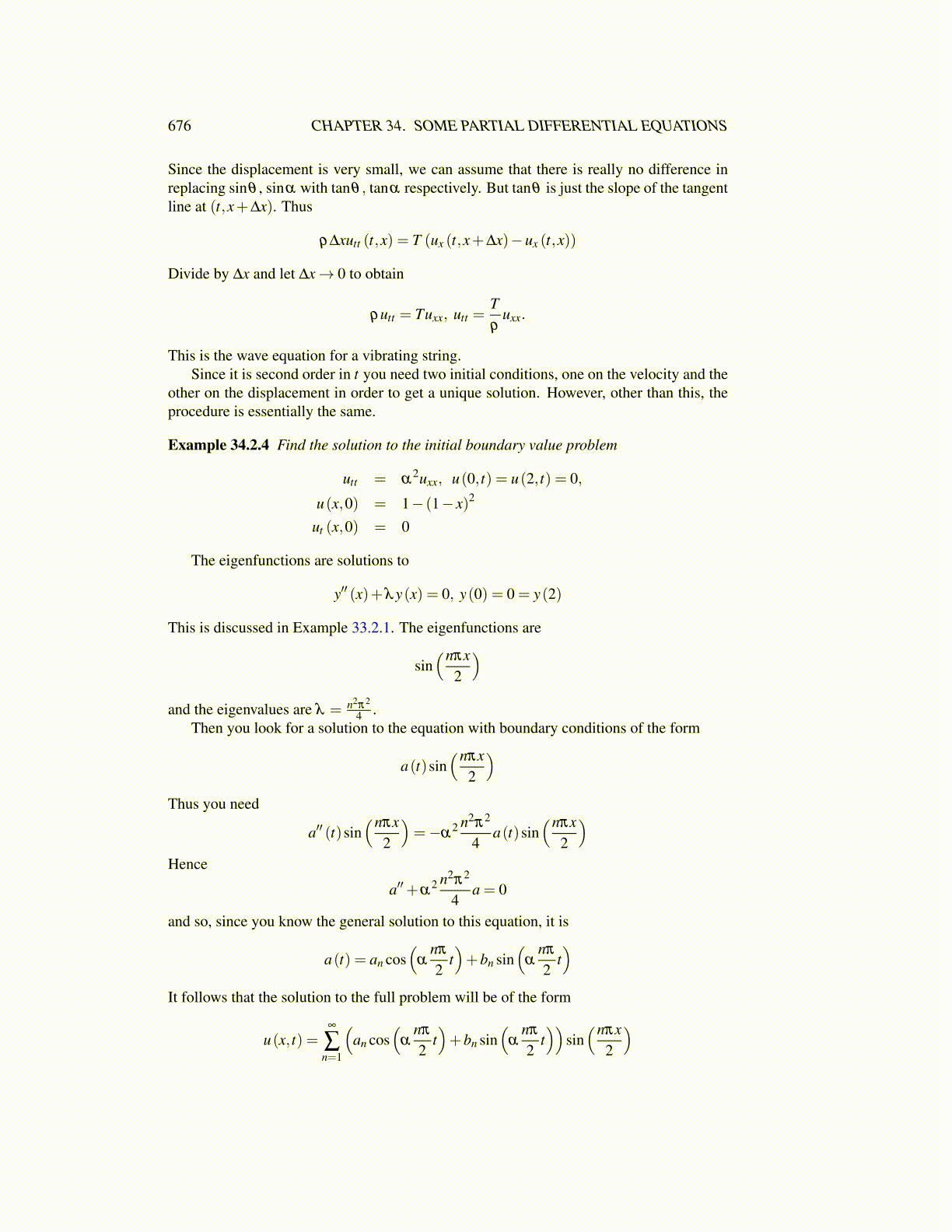
676 CHAPTER 34. SOME PARTIAL DIFFERENTIAL EQUATIONS
Since the displacement is very small, we can assume that there is really no difference inreplacing sinθ , sinα with tanθ , tanα respectively. But tanθ is just the slope of the tangentline at (t,x+∆x). Thus
ρ∆xutt (t,x) = T (ux (t,x+∆x)−ux (t,x))
Divide by ∆x and let ∆x→ 0 to obtain
ρutt = Tuxx, utt =Tρ
uxx.
This is the wave equation for a vibrating string.Since it is second order in t you need two initial conditions, one on the velocity and the
other on the displacement in order to get a unique solution. However, other than this, theprocedure is essentially the same.
Example 34.2.4 Find the solution to the initial boundary value problem
utt = α2uxx, u(0, t) = u(2, t) = 0,
u(x,0) = 1− (1− x)2
ut (x,0) = 0
The eigenfunctions are solutions to
y′′ (x)+λy(x) = 0, y(0) = 0 = y(2)
This is discussed in Example 33.2.1. The eigenfunctions are
sin(nπx
2
)and the eigenvalues are λ = n2π2
4 .Then you look for a solution to the equation with boundary conditions of the form
a(t)sin(nπx
2
)Thus you need
a′′ (t)sin(nπx
2
)=−α
2 n2π2
4a(t)sin
(nπx2
)Hence
a′′+α2 n2π2
4a = 0
and so, since you know the general solution to this equation, it is
a(t) = an cos(
αnπ
2t)+bn sin
(α
nπ
2t)
It follows that the solution to the full problem will be of the form
u(x, t) =∞
∑n=1
(an cos
(α
nπ
2t)+bn sin
(α
nπ
2t))
sin(nπx
2
)